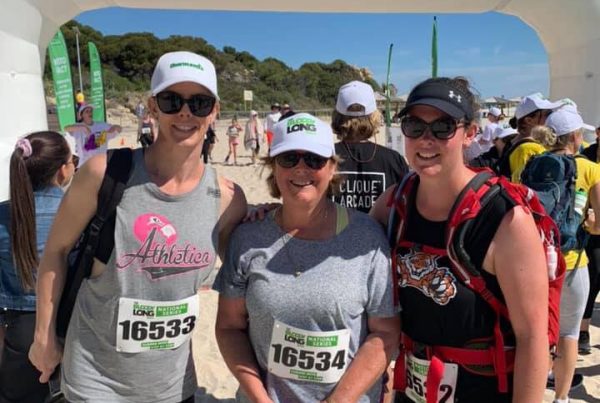
Pain is a part of life. Sometimes it is useful and can be a warning of danger, injury, or illness. Children learn to avoid danger because of pain. A baby’s crying warns parents to find out what is wrong. The very rare children who cannot feel pain often cause themselves serious harm. However, some pain, such as pain from surgery or from a needle, is not a warning. It serves no useful purpose. Pain should be treated. Untreated pain causes anxiety, depression, irritability and exhaustion. Pain can also cause problems with eating and sleeping. Pain may cause people to act in “babyish” ways. Pain causes changes in the brain that make future pain worse. Pain can slow healing, disrupt treatment and may cause medical problems. Pain that is not controlled makes people afraid…..
I have adapted the above paragraph from a document produced by Royal Children’s Hospital in Melbourne. The children’s hospitals in Australia have whole departments dedicated to pain, both acute and chronic. We are learning more and more about pain, and this is a topic that is obviously close to my heart… I started thinking about it more today, when a client who having completed her first session with me stated “I’d thought it was something I would just have to get used to…” I hear this every day and it is not true for the majority of people.. Another client during the week said to me “I am only 25%. I am depressed and don’t feel myself, this is not normal and I don’t want this to be it”.
At least one in five Australians lives with chronic pain, and often the cause is unknown. Scientists are just now discovering the crucial role the brain plays in how pain is experienced, and how it might pave the way for treatment. The economic and social burden of chronic pain is enormous.
Every emotion and thought is amplified when suffering pain. People with ongoing pain, anticipate pain with a lot of fear and worry. The pain becomes all consuming. I became a ‘pain victim’ years ago, and indeed found myself to be one of the patients I did not like looking after- when asked how they were, was given the whole pain story from start to finish.
Pain is not only physical, but emotional and psychological. The brain cannot differentiate between physical and psychological pain. The two parts of the brain that play a role in pain are the thalamus and the prefrontal cortex. Described as the ‘border in the brain’, the thalamus acts as the gateway between the spinal cord and higher brain centres. When you sustain an acute injury there is an opening in the thalamus for information to pass through from the affected body part to the brain. We need this to open, as we need to heal, and we need to relax. After an acute injury is healed, this border should close. It has been found however that when acute pain doesn’t go away, and becomes chronic pain, the opening in the thalamus has been found to remain open long after the initial pain is gone.
Recent research, has found chronic pain decreases the size of the thalamus, resulting in a decrease of a specific neurotransmitter: gamma-aminobutyric acid, or GABA.
Researchers also found people with chronic pain experienced a reduction in the size of their prefrontal cortex—the region of the brain that is understood to regulate emotions, personality expression and social behaviour. This results in a further decline in the neurotransmitter GABA.
When we experience pain, emotion and thoughts are amplified. People with ongoing pain anticipate pain with a lot of fear and they worry a lot of the time. They can’t soften these feelings because the prefrontal cortex has lost its ability to dampen down these thoughts.
Anxiety, depression and suicidal thoughts can be big problems for those living with chronic pain.
On the positive side, this border, the thalamus, can actually close, and this can be done with neuro-feedback. It is possible to change the way the cells talk to each other and actually rewrite the painful memories. This is one of the premises that the physiokey is based on in treating pain.
Our brain takes information from our different senses—from touch, from sound, from vision, from movement—it puts all these things together for us to create a perception or a feeling of our own body. Knowing this, we can use different techniques to help cope with pain.
- Diversion techniques, such as visualisation and guided imagery training, shifting your attention away from the pain. Even music and aromatherapy have been shown to reduce pain sensitivity through distraction.
- Biofeedback, relaxation, controlled breathing, meditation, and self-hypnosis teach you to respond to pain with mental relaxation. They help you learn to ease your muscles rather than tense them, which increases pain.
- Cognitive restructuring helps curb negative thinking and catastrophising—”This will never get better; nothing works!”—in favour of more realistic thoughts—”Yes, I had a pain flare. I’ve had them before and they don’t last forever.”
I think self-talk is really important. Tell the pain to go away, and make sure you tell yourself it will not always be there. Positive rather than negative is key. Don’t let your pain consume you- be it’s master.
- Activity pacing helps you gradually increase your tolerance for activities by understanding your limits, alternating moderate periods of activity with rest, and stopping before the pain becomes severe. This halts a devastating cycle: Fear of pain leads to avoiding activities and a gradual loss of function, which then leads to more pain and disability.
Once upon a time, doctors put people to bed to treat back pain. We now know this is actually counterproductive and moving and exercising through pain can be beneficial.
- Operant conditioning is based on the observation that pain behaviours—grimacing, moans, limping, withdrawing from activities—can become habitual because of the responses they elicit from your spouse or doctors.
I can relate to this last one- limping has become a habit for me. After years of back pain, I periodically limp. I am only aware when someone mentions it to me and asks me what I have done to hurt myself. What would be better would be my husband saying “you’re walking really well” and reinforcing the positive rather than the negative.
I hope his has provided some insight into pain and some alternatives for pain relief. Please ensure you always see a Dr is your pain persists and does not improve with conservative treatment.
I am available for appointments during the week, evenings and weekends. Information on neurostimulation biofeedback can be found on my website www.perthkeytherapy.com.au




